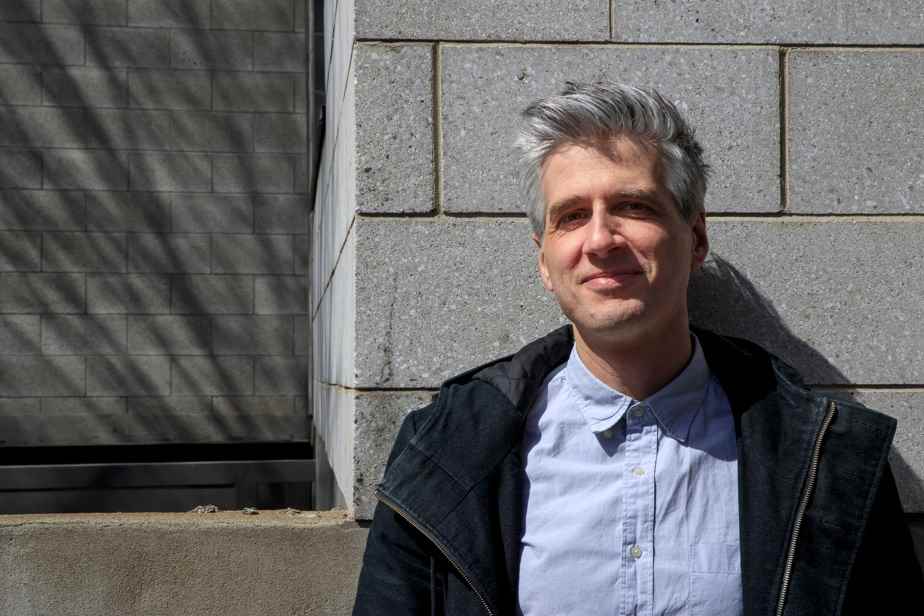With their unique pen and their own sensitivity, artists present to us, in turn, their vision of the world around us. This week, we are giving carte blanche to Olivier Niquet.
Posted at 9:00 a.m.
People who know me know that I am measured in everything. It’s almost sad. I only swear when I find myself in my last entrenchments, I practice running, but not to the point of destroying my kneecaps, and I never take a second portion of this delicious Estrie ice cream, despite the pleas of my taste buds. That’s probably why I’ve always been fascinated by people who exaggerate and ignore nuance.
However, there is one area where I myself become an extremist: urban planning. There are days when I would like to get behind the wheel of a bulldozer (that’s the scientific name for a bulldozer) and wipe out a neighborhood, a city or even a regional county municipality. Like at Simcity when I was a kid. It is that in terms of town planning, the nuance kills us quietly. And it is literally killing us. I literally use the word quite literally here. Not like in the phrase “the Bell Center is literally on fire after this Cole Caufield goal”.
Our urban environment has direct effects on our health and life expectancy.
If you live on a street without sidewalks, in a neighborhood without trees and a few meters from a shameless highway, you are likely to live less long and in less good shape than a person who has access to the smell of flowers rather than to that of mufflers.
It seems to me that this should convince everyone to take an interest in municipal politics: “Choose your mayors well, you could die less. This observation could also be put forward to shake off the paralysis of the population, which is reminded every morning, over breakfast, of its powerlessness in the face of climate change. The prospect of dying too young because we decided to build neighborhoods on the paradigms of the last century should be a source of motivation. Yes, I said it: paradigms.
In urban planning, runoff is not just a fallacious theory. If our planning choices have an impact on the well-being of people, they also have an impact on the climate, on our health system and on public finances. Unfortunately, this chain reaction is not conducive to the composition of a catchy electoral slogan. It remains less in mind than “We give ourselves Legault”. Politicians, driven by their desire to be elected (and if possible soon), set aside ideas that would only bring electoral gains to a possible successor who may not yet be born.
Moreover, since we are in a kind of attention economy, it pays for a more or less well-meaning media figure to be outrageous in his defense of the status quo. In the attention economy, claiming the inalienable right to go grocery shopping at Walmart in a skidoo is enough to arouse the passions of both wild snow enthusiasts and vegan cyclists. Harvest of likes assured.
Conversely, as is the case with climate change, the effects of our governments’ urban planning choices are sometimes abstract. Even they can be counter-intuitive. One thinks, among other things, of the traffic induced in the medium term by the addition of motorway lanes, regardless of the rate of bridges per million inhabitants (PPM) in your region. A survey in the United States recently revealed that 75% of Americans believe that urban sprawl is more energy efficient than urban densification, which is not the case. We shouldn’t always trust our first impressions. As my car mirrors often remind me: “Objects in mirror are closer than they appear. »
Being radical in urban planning does not mean forcing people to choose lives they don’t want, contrary to what our third crown ministers are insinuating. Rather, it’s about making the city so attractive that they will never be tempted to drive two hours a day to have access to a little greenery and a salt-filtered swimming pool. And there is no question of “polluting the existence of motorists” because no one defines himself as a motorist anyway. Motorists also have legs, like small boats that go on water. You have to fight quality of life with quality of life.
The current supply of roads is disproportionate because the automobile has defined our modern cities, with all that entails of harmful effects: accidents, noise and air pollution and the little Christmas trees hanging from the rear-view mirrors.
But it doesn’t have to be like that. If you walked out of your house in front of a street shared between cars, bicycles, pedestrians and little pesky birds that would nest under a lush canopy rather than on a field of asphalt that makes you want to squeal your tires until in Bay du Nord, perhaps you would be less inclined to spread out your urbanity.
One of the first things that one of my professors in urban planning told us (yes, this is where I leave my argument of authority), is that the city is a palimpsest: a “manuscript made up of ‘a parchment already used, whose inscriptions have been removed in order to be able to write on it again’. And in front of the slowness of the rewriting of our cities, I sometimes want to crown.
